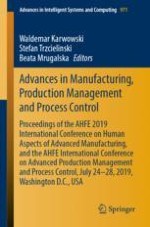2020 | OriginalPaper | Buchkapitel
Research on Thermal Comfort Equation of Comfort Temperature Range Based on Chinese Thermal Sensation Characteristics
verfasst von : Rui Wang, Chaoyi Zhao, Wei Li, Yun Qi
Erschienen in: Advances in Manufacturing, Production Management and Process Control
Aktivieren Sie unsere intelligente Suche, um passende Fachinhalte oder Patente zu finden.
Wählen Sie Textabschnitte aus um mit Künstlicher Intelligenz passenden Patente zu finden. powered by
Markieren Sie Textabschnitte, um KI-gestützt weitere passende Inhalte zu finden. powered by
